I’ve always loved music. I remember going to sleep as a 5 year old listening to music on a small AM transistor radio next to my bed. In high school I loved listening to progressive rock FM stations from New York City late at night such as WNEW. In my sophomore year at college my roommate Brian had an incredible stereo — JBL 100 speakers with orange grills, Dynaco Stereo 400 amp, TEAC reel-to-reel tape deck, and a Thorens turntable. I had a decent record collection, and the combination made for great music listening the entire year. There were lots of rich kids from Long Island in our 20 story dorm at Syracuse, but nobody had better sounding music than our room.

Reconnecting
I hadn’t been in contact with Brian since college, and decided to track him down almost 10 years ago. I found him with the help of LinkedIn. My first question to him was “what do you have?”. He knew I was referring to stereo equipment. He told me he had Bryston electronics and B&W speakers. I had Bryston electronics and B&W speakers! Decades later, with no contact, we chose the exact same brands. But just like back in college, Brian had purchased the high end of Bryston and B&W, while I bought the mid-range. Some things never change.

Reconnecting with Brian, a lifelong audiophile, helped spur my interest in reading more about audio technology. I would occasionally read an article in Stereophile or the Absolute Sound, but they generally reviewed equipment outside of my price range. I also thought I must not have “golden ears”, after reading reviews where the author mentioned how a certain speaker cable had “spiced up harmonics and offered more than juicer textures” or “came up a little short of reference level in conveying the vast spread and dimensional depth that top-tier cables do”. Hard to imagine I would be able to hear and describe such differences between a set of speaker cables or interconnects.
Pono
What really got me interested in reading about the modern state of audio was Neil Young and the launch of Pono. I always liked Neil Young, and thought it was cool that he was behind such an ambitious project as Pono — introducing both a new portable digital music player that supported high resolution audio as well as an ecosystem of high resolution digital music for downloads. What I found surprising was the hugely negative reaction to Pono that many audiophiles had. As I looked into it more, I realized many of the initial objections were simply factually untrue — Pono was not using a proprietary audio codec as many claimed — it used the industry standard FLAC and also supported all other major audio formats including WAV, AIFF, MP3 and AAC.
When Young launched the Kickstarter campaign for Pono I even became a supporter and chose a black Pono unit for $100 less than what would become the list price. I had read that Charlie Hansen of Ayre Acoustics was behind the core design of the Pono — and buying a Pono would be like getting a high end Ayre Acoustics unit for $300.
A few days after I joined the Kickstarter campaign I received an email update from Pono that had an image to show the improved sound quality of the high resolution audio that the player supported.

That’s a pretty impressive chart, and it sure seemed that a 192/24 FLAC file would sound 10x better than a CD, let alone an MP3 or AAC file that had lossy compression.
That chart got me curious, and I started reading about what kind of improved sound you would hear from a 96/24 or 192/24 FLAC download. I had previously purchased a few high resolution downloads from HDTracks.com — the Grateful Dead’s “American Beauty” in 96/24, and a remastered “So” from Peter Gabriel in 48/24. They sounded great, and was looking forward to having a much larger selection of high res music I could access from the new Pono store, and listening to the downloads on my new black Pono player.
Hi-Res Audio
The mainstream audio publications such as Stereophile, The Absolute Sound, and Audiostream were unanimous in their praise of the enhanced audio quality of high resolution audio. CD’s store music at a sample rate of 44.1 thousand samples per second, with each sample being a 16 bit integer. High-res audio uses a higher sampling rate, often 48 or 96Khz, and usually a 24 bit integer, although both numbers can be even higher. The idea is that by having a higher sampling rate and bit length, when the digital audio is converted back to analog sound by your stereo, you hear a closer representation of the original recording. That was the promise of Pono, along with Neil Young and company working with record companies to remaster older albums and make them available in high resolution download formats.
But I discovered not everybody agreed that high resolution audio sounded any better than a CD. I read about the Nyquist theorem in digital signal processing, which basically states that to digitize an analog signal and convert it back to analog you need twice the frequency of the highest frequency you want to capture. Humans can hear at best a range of 20Hz to 20kHz. So Nyquist states you would need a sample rate of 40kHz to capture and playback audio. Throw in some headroom and error correction, and that’s how Sony and Philips came up with the sample rate of 44.1kHz for the CD. But if that’s true, what was behind all of the excitement behind higher resolution sample rates?

The Two Best Audio Blogs on The Web
At this point I discovered two blogs that changed my entire view of the audiophile world. Mark Waldrep’s Real HD-Audio and archimago.blogspot.ca. Mark Waldrep (aka Dr. AIX) is a recording engineer and the founder of AIX Records and iTrax.com. Although AIX Records was founded in 2000 as one of the first (if not the first) high-definition audio labels, many of Mark’s postings focused on debunking the bogus claims and misinformation about hi-res audio. In an interview with The Poor Audiophile he stated his definition of hi-res music:
“Real high-res music must have been recorded using high-resolution capable equipment. That rules out any analog recordings and any albums made using less than 24-bits (the first one appeared in 1996). It means that the fidelity is equal or exceeds that of the human ear…we can do that for the first time now.”
Well that’s a bummer. By that definition, the hi-res music downloads I had purchased were not hi-res. “So” was recorded on two analog 24-track decks, and “American Beauty” was released in 1970, way before 96/24 digital recording technology existed. At this point I felt ripped off. I paid a premium for the hi-res downloads I purchased from HDTracks.com, only to discover they weren’t really hi-res.
Compressed vs. Uncompressed Audio
Archimago is an audio blogger from Vancouver, Canada. He’s an incredibly bright guy who also writes in a very engaging manner. Unlike most of the commercial audiophile publications, he has testing equipment that allows him to publish measurements in various postings. Odd that AudioStream cannot afford to buy test equipment, but some dude in Canada has the necessary equipment in his house to do so.
Back in 2013 he did an online survey, soliciting readers to do a blind comparison of lossy MP3’s to lossless FLAC-encoded files ripped from CD’s at 16/44. He wanted to find out if people could hear a significant sonic degradation with 320kbps MP3’s, similar to what you hear from a premium account on Spotify. The result?

The majority thought that the lossless FLAC-encoded tracks (Set A above) sounded worse than the lossy 320kbps MP3’s. Oops. So if people (many of these audiophiles with very expensive equipment) thought that high bitrate MP3’s actually sounded better than a CD rip in Lossless at 44/16, what was the point of hi-res audio at 96/24, let alone 192/24 like in the Pono chart.
Audiophile Publications
After reading through Mark Waldrep’s and Archimago’s blogs, I decided to cancel my Pono order from Kickstarter. It seemed that Pono’s marketing of hi-res audio was really misleading, and I don’t like to be mislead.
From the whole Pono adventure, along with discovering Real HD-Audio and archimago.blogspot.ca, I plugged a number of the most popular audiophile sites into my Feedly newsreader that included:
- AudioStream
- Stereophile
- The Absolute Sound
- Computer Audiophile
- Inner Fidelity
- Positive Feedback
- whathifi
- Audioholics
Over time I noticed a very similar pattern across most of these sites. There were few if any bad reviews. Almost all were very positive for the equipment reviewed. And in any specific review, when comparisons were made with other equipment, generally the more expensive something was, the better sounding it was in relation to less expensive equipment. Not surprising I guess. Most impressive was the vocabulary that most of the reviewers on these sites used:
“macrodynamics, detailed presentation, natural yet non-euphonic textures, upfront sound that is vivid and exceptionally focused, micro dynamic qualities, spatial cues and imaging…”
I had no idea what these guys were talking about, and many of the amps, preamps and DACs being reviewed were over $10,000, way over my budget if I was in the market for new gear. It was also interesting that many “reviews” were really nothing more than repurposed press releases from the manufacturer.
Audiophile Digital Cables
What I found most interesting though was audiophile site reviews of digital cables — both USB and Ethernet. I’m a Computer Scientist and have a pretty good understanding of how USB and Ethernet protocols work. They are both packet-based, have error detection, and in the case of Ethernet have error correction. If there’s any kind of error in an Ethernet transmission the packet is retransmitted. The burst mode of USB audio doesn’t do error correction, but it’s pretty easy to measure the error rate for any USB cable with simple test equipment.
Knowing how USB and Ethernet work, I was amazed to see glowing reviews of expensive versions of these cables for the audiophile market. Ethernet cables for $1000/meter. USB cables for $3500? In every digital cable review I read in The Absolute Sound and AudioStream the more expensive cable, the better the sound. And many reviews stated the differences were not subtle. Wow, how could that be? Especially because if a USB cable did transmit errors you would hear static — but these reviews wrote glowingly about these exotic cables with descriptions such as this $895 cable in The Absolute Sound:
“I’ve listened to a number of top-end USB cables, but none approaches the Audience in sheer naturalness of timbre. The Au24 has an extremely smooth, rich, and liquid rendering of tone color that is a welcome departure from the many USB cables that impart a synthetic, “plastic” character to the sound. Midrange textures through the Au24 SE are rich, dense, dark, complex — even voluptuous. The tendency for USB to sound a bit mechanical and artificial is replaced by an organic flow and ease with the Au 24 SE in the system. Similarly, the treble is the antithesis of bright, hard, forward, and thin. The top octaves never call attention to themselves; the treble sounds like a natural part of an instrument’s timbre rather than a separate component.”The Absolute Sound
At the same time, Archimago rigged up a test for three different USB cables and couldn’t detect any difference in sound. Mark Waldrep, who runs a high-end recording studio, consistently posted that high end digital cables were a complete waste of money, and any good quality USB or Ethernet cable would result in exactly the same sound as a $3500 cable from the audiophile cable companies. Who was right?
Follow The Money
Another pattern I noticed among audiophile publications is that they had a fairly small number of advertisers, and exotic audio cable manufacturers such as Audioquest, Nordost and WireWorld were among their largest advertisers. I had read that some of these companies purchased cables manufactured in China for $10/meter, put them in expensive packaging, and resold them for $1000/meter. If that was true they would certainly have a lot of room for expensive online marketing campaigns. Could it be that there was some connection between the glowing reviews of $3500 digital cables in these publications, and the fact that the audiophile cable industry was a major advertiser paying for their existence?
What would happen if any of these publications posted just one review of a $10 Belken digital cable and determined it sounded just as good as a $3500 cable from Shunyata Research?
AudioStream
As I was trying to understand what was going on with this whole exotic digital audio cable thing I saw a comment from my favorite blogger, Archimago, on AudioStream where he asked:
“Have the traditional audiophile blogs and magazines and reviews helped to educate rather than sell product?”
Michael Lavorgna, AudioStream’s Editor replied to Archimago’s posting with:
“I know exactly where you stand on this subject and you should know exactly where I stand. Frankly, I find most of your posts here to be nothing more than adverts for your own blog, Archimago. And I wish you the best of luck with your site but I am getting tired of your endlessly repeating the same thing, over and over again here.”
Well, I thought that was a really cheap shot. And by this point I thought I had figured out what was behind the glowing reviews of $3500 USB cables in AudioStream and other commercial audiophile sites — keeping their advertisers. So I posted a comment with this final paragraph:
“Perhaps with the migration of print media to the Web, and the expectation among consumers that online content should be free, the idea of having an online magazine such as Audiostream publish objective content to their readers that is unbiased and educational is inherently in conflict with the business goals of maximizing advertising revenue. I would hope not. But for now, that certainly seems to be the case.”
In addition to getting an obnoxious reply from Lavorgna, I was surprised to get a personal email from him where he threatened to block my account should I do a similar posting in the future where I questioned whether his advertisers could possibly influence his reviews. Up until this point, I was pretty sure I had correctly figured out the situation here, but Lavorna’s email removed any doubts I had about my conjecture of the cozy relationship between high end audio manufacturers and the audio publications they support with their advertising.
It would be unfair to just pick on AudioStream though. There are glowing reviews of the same $1000+ digital cables in The Absolute Sound, Positive Feedback, and virtually all other commercial audiophile publications.

Conclusion
I still love music. I love my 22 year old Bryston electronics and 17 year old B&W speakers. I recently put together a “networked streamer/DAC” for $150 using a Raspberry Pi B+ and IQAudio PI-DAC+ I2S DAC. The DAC is physically connected to the Raspberry Pi single board computer using the I2S protocol, so no need for a USB cable. It sounds fantastic, and is easy to operate using the open source Volumio audiophile Linux build running on the Pi.
This article was originally posted on Medium by Jim Ambras on February 21, 2016. Re-printed with permission.
Related Podcast: Is Hi-res Audio More Hype Than Reality? An interview with Dr. Mark Waldrep.









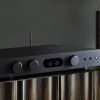







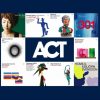








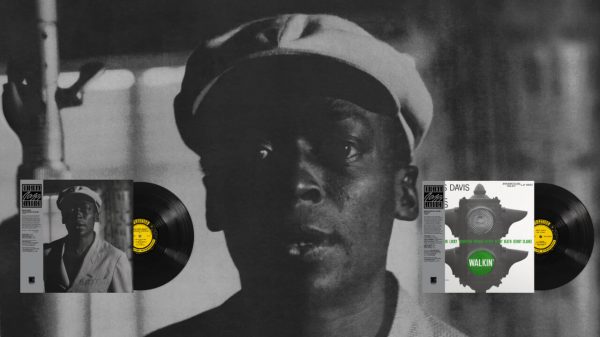




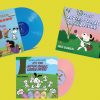
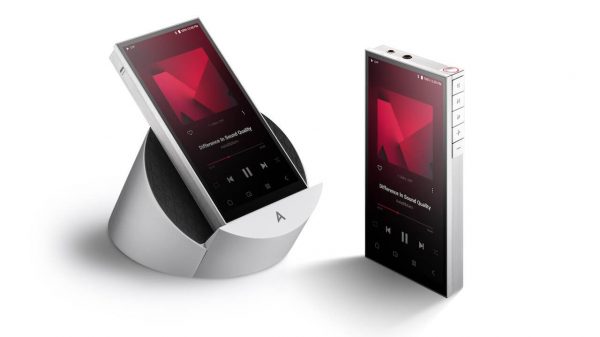
















John Norris
January 19, 2022 at 2:25 pm
It has become obvious that online and print audiophile media is just the advertising arm of the snake oil industry. When I see glowing, gushing reviews of ethernet cables, “audiophile” network switches, and anything out of Synergistics Research, I know that there is massive grift going on.
Ian White
January 19, 2022 at 2:46 pm
John,
3 things we’ve never gushed about.
I’m not sure that I agree that we are all the “advertising arm of the snake oil industry.”
We have a $10,000 system ceiling for reviews here and we try to keep our reviews of components to under $5,000 of any single component. Most of our equipment reviews are below $2,500.
I agree that audiophile ethernet cables are nonsense. I use CAT-6A stuff I bought from Staples.
Best,
Ian White
Andrew
January 19, 2022 at 10:35 pm
And here lies the problem.. the comment, “and any good quality USB or Ethernet cable would result in exactly the same sound as a $3500 cable from the audiophile cable companies”….
So you all agree quality matters. As do I.. but at what price is this good quality. Thanks for leaving us to guess. £1.57. £257.99 or higher.. ……
David Haskell
January 20, 2022 at 12:40 am
Love this article and agree with so much here.
But I’ve yet to see a blind mp3/Hi-res study that felt like it proved anything.
I’ve read Archimego’s procedure, and it does a lot to account for a lot of variables, but since he couldn’t control hardware, playback, length of listening section, etc, his data and conclusions aren’t that solid.
Here’s the data I would want to have before drawing conclusions about lossy compression: how loud did you listen? How quick were you to fast forward to the next song? When a song was over, how likely were you to play another song?
Sound quality – after a certain point – becomes less quantifiable. I can never tell, moment to moment, if I’m listening to 320 kbs or something less compressed. But I’ve had moments where I’ve noticed after 20 or 30 minutes in a car – wait, something doesn’t feel right. Then I’ll remember how I flipped to a lossy compression because I wasn’t getting good service, or on a plane, or something, and forgotten to turn it back.
Achieving good sound quality has to be about simpler, abstract ideas: do I enjoy listening to the music? Does it make me feel relaxed or agitated? When one song ends, am I excited for the next one to begin? Making these observations isn’t easy, and they are obviously subjective. That’s the point.